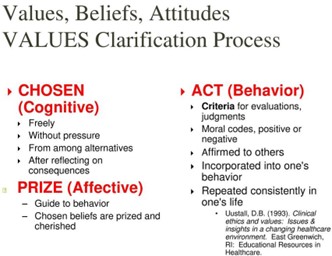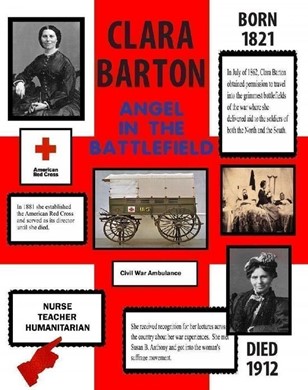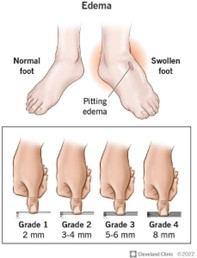Ati Fundamental Final Exam
Ati Fundamental Final Exam
Total Questions : 72
Showing 10 questions Sign up for moreThe nurse educator provides developmental testing for kindergarten through third-grade students. Which level of prevention is the nurse performing?
Explanation
Developmental testing for kindergarten through third-grade students is an example of primary prevention. Primary prevention aims to prevent disease or injury before it occurs by promoting healthy behaviors and reducing exposure to risk factors.

A client who has been blinded as a result of an injury has informed the nurse of her plans to return to her counselling practice and work full-time. The nurse should realize that this client is demonstrating which aspect of values clarification?
Explanation
Values clarification is the process of assisting another to clarify their own values in order to facilitate decision-making ¹. In this case, the client who has been blinded as a result of an injury has informed the nurse of her plans to return to her counseling practice and work full-time. This demonstrates that the client has prioritized her values and made a decision based on them.

A nursing diagnosis of "Risk for Deficient Fluid Volume" related to excessive fluid loss, secondary to diarrhea and vomiting was implemented for a home health client who began with these symptoms 5 days ago. A goal was set that the client's symptoms would be eliminated within 48 hours. The client is being seen after a week and has had no diarrhea or vomiting for the past 5 days. What should the nurse do?
Explanation
The nursing diagnosis was "Risk for Deficient Fluid Volume" related to excessive fluid loss, secondary to diarrhea and vomiting. The goal was set that the client's symptoms would be eliminated within 48 hours. The client is being seen after a week and has had no diarrhea or vomiting for the past 5 days, indicating that the problem has been resolved. Therefore, the nurse should document that the problem has been resolved and the goal has been met.
An unlicensed assistive person (UAP) is working in a rehabilitation unit. Which task would be appropriate for this person to delegate?
Explanation
An unlicensed assistive person (UAP) is a healthcare worker who is not licensed to perform nursing tasks but can assist with basic care under the supervision of a licensed nurse. Taking and recording vital signs is a task that can be delegated to a UAP. Making a bed and assisting with bathing are also tasks that can be delegated to a UAP. However, an unlicensed assistive person may not delegate tasks to others as they are not licensed to do so.
The nurse is identifying outcomes for a client with the nursing diagnosis of Stress Urinary Incontinence. Which outcome would be related to sphincter incompetence?
Explanation
Stress urinary incontinence is the involuntary loss of urine during physical activity such as coughing, sneezing, or exercising. It is often caused by weakness of the pelvic floor muscles and/or the urethral sphincter. An appropriate outcome for a client with this condition would be to improve the strength of these muscles. Performing isometric squeezes, also known as Kegel exercises, can help strengthen the pelvic floor muscles and improve sphincter competence. This can help reduce or prevent episodes of incontinence.

A nurse is educating women on the need for calcium to prevent bone loss. What level of prevention does this represent?
Explanation
Primary prevention refers to actions taken to prevent the occurrence of a disease or condition. In this case, the nurse is educating women on the need for calcium to prevent bone loss, which is an example of primary prevention. By providing information on how to maintain strong bones and prevent bone loss, the nurse is helping to reduce the risk of conditions such as osteoporosis.

Which of the following statements is true regarding types of health care agencies?
Explanation
Public health agencies are responsible for protecting and improving the health of communities. They are often funded by government grants and work to prevent the spread of communicable diseases through measures such as vaccination programs, disease surveillance, and public education campaigns. Surgery can be performed in a variety of healthcare settings, not just hospitals. Skilled nursing extended care facilities provide care for individuals who require ongoing medical support, not just older adults whose insurance no longer covers hospital stays. Hospitals provide a range of services, including acute inpatient care as well as outpatient and emergency services.
Which of the following nursing pioneers established the Red Cross in the United States in 1882?
Explanation
Clara Barton was a pioneering nurse who is best known for founding the American Red Cross in 1881. She was a hospital nurse during the American Civil War and later worked to provide aid to soldiers and civilians affected by war and natural disasters. In 1881, she established the American Red Cross to provide humanitarian assistance during times of crisis. The organization continues to provide disaster relief and support to this day.

The client is admitted to the nurse's unit with a diagnosis of heart failure. His heart is not pumping effectively, which is resulting in edema and coarse crackles in his lungs. The term for this condition is:
Explanation
Heart failure is a condition in which the heart is unable to pump blood effectively, leading to a buildup of fluid in the body. This can result in edema (swelling) and fluid accumulation in the lungs, causing coarse crackles when breathing. The term for this condition is fluid volume excess, which refers to an excessive amount of fluid in the body.
Myocardial infarction is a heart attack, atelectasis is a collapse of lung tissue, and fluid volume deficit refers to a lack of fluid in the body.

During discharge planning, the nurse is responsible for teaching the client how to maintain comfort, promote healing, and restore wellness. However, one of the actions listed below is not correct.
Explanation
During discharge planning, the nurse is responsible for teaching the client how to maintain comfort, promote healing, and restore wellness. This includes instructing the client to report promptly to the practitioner any **increased** redness, swelling, pain, or discharge from the incision or drain sites. These symptoms may indicate an infection or other complication that requires medical attention. The other actions listed are correct and important for promoting healing and wellness after discharge.
You just viewed 10 questions out of the 72 questions on the Ati Fundamental Final Exam Exam. Subscribe to our Premium Package to obtain access on all the questions and have unlimited access on all Exams. Subscribe Now



